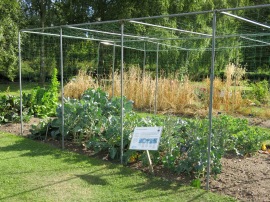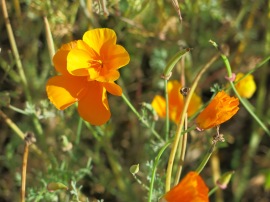 The Genetics Garden Plant breeding and plant hybridisation has a history that goes back to the first farmers, over 10,000 years ago, selecting the best seeds for forthcoming crops. The Genetics Garden was developed in 1998, by Professor John Parker, with seeds supplied by the John Innes Institute and the National Institute of Agricultural Botany (NIAB). It was created to demonstrate ‘the dramatic effect of genes on plant growth and development and how, over the years, plant breeders have improved the crops we grow.’
The Genetics Garden Plant breeding and plant hybridisation has a history that goes back to the first farmers, over 10,000 years ago, selecting the best seeds for forthcoming crops. The Genetics Garden was developed in 1998, by Professor John Parker, with seeds supplied by the John Innes Institute and the National Institute of Agricultural Botany (NIAB). It was created to demonstrate ‘the dramatic effect of genes on plant growth and development and how, over the years, plant breeders have improved the crops we grow.’
Genetics and the development of hybridisation has a long history at Cambridge. Indeed it was Cambridge zoologist, William Bateson, who coined the term ‘genetics’. Bateson and his colleagues, including Edith Saunders, carried out the first genetic experimental in Britain on experimental plots in the allotments at the eastern end of the Botanic Garden in the late-nineteenth and early-twentieth century. The Genetics demonstration beds show the development control of pea leaves, the effects of dwarfing genes in wheat, the control of floral development, derivates from wild cabbage Brassica oleracea and from wild sea beet Beta maritime.
International legal controversies over the use of genetically-modified crops led to the topic of genetics and genetic-modification to be hotly debated in the media.





